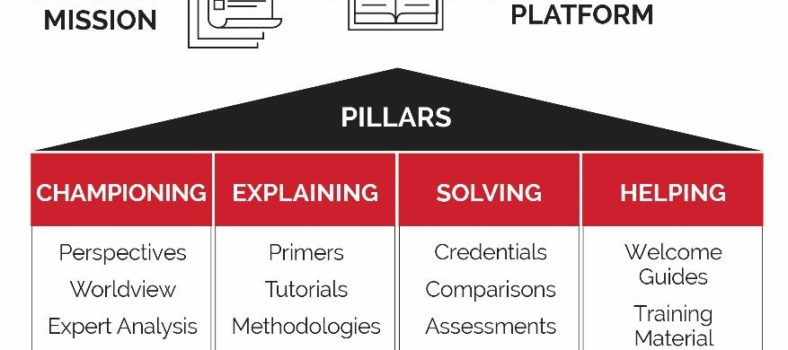 By Rafael Lourenco
By Rafael Lourenco
Merchants, what worries you more, getting ripped off by fraud or offending your customers? If you said fraud, that’s reasonable. Organized criminals using stolen card data and hijacked customer accounts can steal your merchandise and cost you chargebacks and extra processing fees.
But too often, good customers get caught in the anti-fraud net and end up seeing their orders rejected, i.e. false declines. That unintended consequence of fraud control costs merchants much more than fraud.
It may seem like false declines are the cost of doing business without being swarmed by fraudsters. But that’s not necessarily true. It’s possible to maintain strong fraud prevention without losing revenue from good orders. To do so, merchants need to understand the scope of the false decline problem and the steps needed to solve it.
Comparing losses
Card-not-present (CNP) fraud will cost North American merchants US$5.5 billion in 2019. That figure comes from an Aite Group report sponsored by ClearSale.
But to put that in perspective, although it’s a large number, it’s not as big as the losses from false declines. Lost revenue from false declines is projected to reach US$370 billion this year. That’s roughly 67 times more money lost to false declines than to completed fraud. And 62% of the merchants surveyed for the report said their false decline rates have increased during the past two years.
False declines can cause problems for any merchant, but they’re a bigger problem for CNP transactions than point of sale (POS) purchases. The authorization rate for POS purchases averages 97%, while approval rates for CNP orders range from 80 to 85%.
Besides missed sales, false declines can create other long-term losses that are hard to estimate. According to a Motley Fool article 63% of consumers say one bad experience is enough to make them quit shopping with a brand1. That reduces the customer’s lifetime value and drives up the merchant’s customer acquisition costs.
Three steps to take
Clearly, reducing false declines is good for merchants and their customers. However, doing so is a challenge. Make the checkout process too onerous for customers and you’ll lose them before they place orders. Loosen your fraud controls and you’ll end up trading false declines for more fraud.
There is a path to fewer false declines without more fraud or undue customer friction. It starts with data, moves to analysis and develops into a plan that fits your store’s situation.
1. Gather data
Most merchants (79%) track their false declines, which is important. If your business doesn’t do this, it’s time to start. How can you tell which declines are false? Merchants typically use three methods. The most common is to track orders that are successful on the second try and don’t result in chargebacks. Another option is to track which declined orders are followed up by inbound contact from customers. Some merchants pursue a third approach—setting up control groups that approve some orders with fraud flags—and then tracking how many if those result in chargebacks.
It’s a good idea to track your false declines by channel as well as your overall rate. That’s because each channel has its own fraud risk profile and authentication options. For example, it’s one thing for a merchant to know that their overall false decline rate is 4%. But knowing that 80% of those false declines happen in the mobile channel makes it easier to decide where to start making changes.
2. Find your problem areas
Once you have data on your false decline rate, look at your order approval process. At what stages do transactions get declined in error and why?
Is your automatic fraud screening program set to automatically reject orders that are suspected of fraud?
Have you set overly broad fraud-screening parameters, such as automatically rejecting all cross-border orders? and
Is it possible that other parties to your transactions, like acquirers and gateways, are declining good orders?
3. Correct the problems
When you know your false decline rate, and where the problems are, you can improve the situation. You might consider adding security steps that put the burden of proof on customers, like two-factor authentication (2FA). However, keep in mind that the more steps the customer must take to make a purchase, the more likely they are to abandon their cart.
Other options to reduce false declines require more resources on the merchant side. The benefit of these approaches is that they don’t add friction to the customer’s experience.
Adding behavioural biometrics, fraud scores and machine learning models to your fraud screening program can make your fraud screening more accurate;
Manually reviewing suspect orders, instead of automatically rejecting them, can reduce false declines and customer churn;
Feeding the manual review results into your machine learning model will make it even more accurate over time; and
Sharing your false decline data with other transaction parties may help you collaborate to reduce false declines.
Keep monitoring your order metrics after you implement changes to see if they’re having the intended effect. This is especially important if you add 2FA to ensure you’re not losing orders to cart abandonment. Figuring out your false decline rate and solving it takes an investment of time. Done right, it can yield more revenue and better customer service while protecting your store from fraud.
Rafael Lourenco is executive vice president and partner at ClearSale, a card-not-present fraud prevention operation that helps retailers increase sales and eliminate chargebacks before they happen. The company’s proprietary technology and in-house staff of seasoned analysts provide an end-to-end outsourced fraud detection solution for online retailers to achieve industry-high approval rates while virtually eliminating false positives. Follow on Twitter at @ClearSaleUS or visit http://clear.sale/.
1 Daniel B. Kline, “How Much Damage Can 1 Bad Experience Cause a Brand?”, Motley Fool, April 22, 2019.


